Cartier and Chaykin and Two Mystery Watches
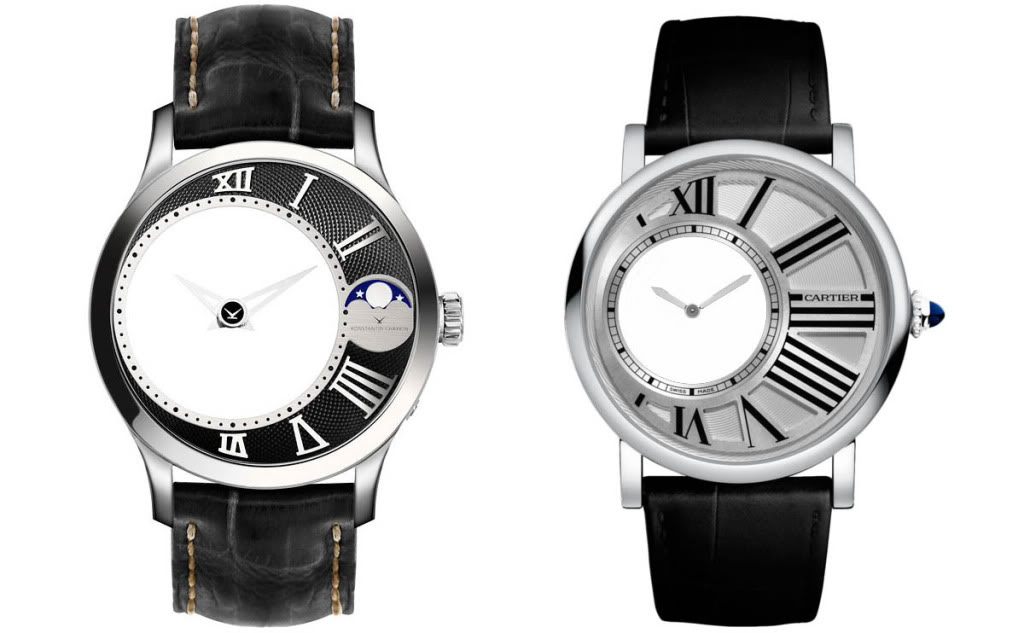
When two celebrities step-out onto the same red-carpet wearing the same dress it can create an awkward and sometimes ugly scene. Then the folks in the blogosphere star asking “Who wore it better?” or “Who ‘Rocked’” a certain look. What happens when two names synonymous with über-Horology produce uncannily similar designs? Let’s find out…

When you spend all day trawling through different online watch forums you pick-up a lot of banter about ‘derivative designs’. Most times what people are talking about are what you would more generally call a “knock-off”. Strings of posts ensue. These shoving matches descend into a version of “car is faster than your car…” and then I click on to newer and hopefully more enlightening posts! Let’s be honest for a moment: not every round / square / rectangular / octagonal / polygonal watch is a ‘knock-off’ of the all the watches of the same shape that came before it. Sometimes watchmakers use the shapes that we are all familiar with to try to twist the imagination into seeing something new! Then sometimes I have to just shake my head and wonder what, if anything, was going through the minds of the people that do some of this crap?!?!?!
A few weeks ago I was confronted with something rather startling: watch déjà vu!
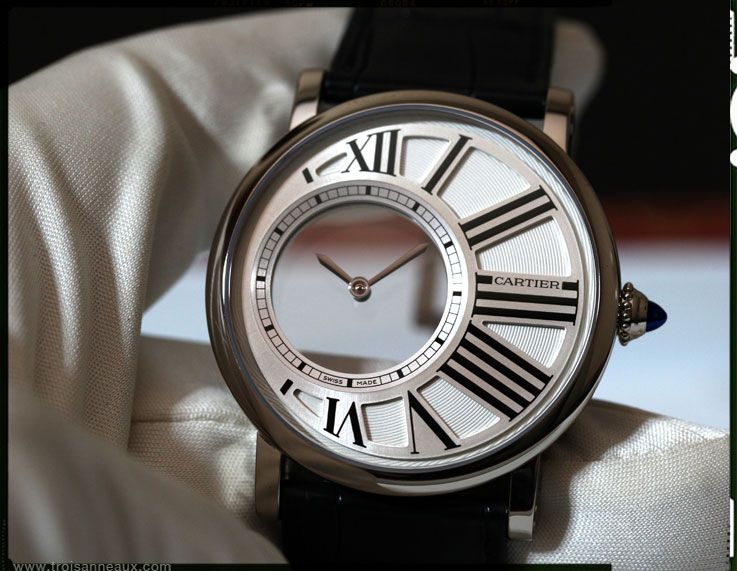
While going through all of the press material from SIHH I saw a ‘NEW’ design and thought ‘wait – I’ve seen this before!’ Behold: the Cartier ROTONDE de CARTIER MYSTERIEUSE! The new Cartier is a 42mm, round gold case that has an offset dial that is at first blush transparent. The initial reaction when you look at it is to say: “how do they do this?” The 9981 MC caliber, 27-jewel movement was developed in-house, specifically for this application. The hands are placed on geared discs of sapphire and are driven in the margins of the case! A quick at the reverse side shows all the necessary bits and pieces of the movement are miniaturized and shoved off towards the crown-side of the watch.

The dial (what there is of it) is presented in classic Cartier fashion: intricately engraved concentric circles around the dial with roman numerals depicted in a skewed, fish-eye treatment. Both dial aspects are meant to highlight the circular void! Aside from the traditional Cartier styling cues I couldn’t help but think I’d seen a watch like that before – but not as a Cartier watch!
Let me set the WABAC Machine (???) to October 2012. At the AHCI show in Shanghai I got to spend some time with Konstantin Chaykin. Konstantin was extremely proud to display his Levitas watch; a 44mm gold watch which was at first blush totally transparent where it counts.
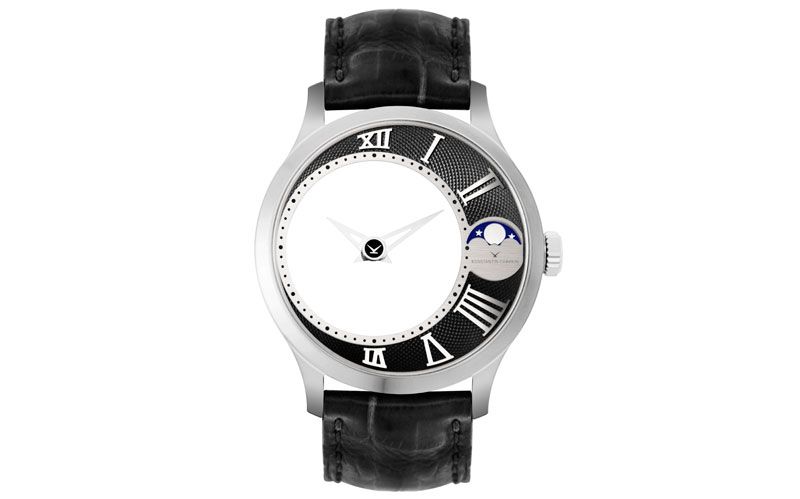
Over four years in the making by the point in time I got to see one up close, the Levitas is an impressive design (“READ ALL ABOUT IT!”). It’s not just beautiful to behold – but confounding! The initial reaction when you look at it is to say: “how does he do this?” The KMR-02 0, 29-jewel movement was developed in-house, specifically for this application. The hands are placed on geared discs of sapphire and are driven in the margins of the case! A quick at the reverse side shows all the necessary bits and pieces of the movement are miniaturized and shoved off towards the crown-side of the watch.
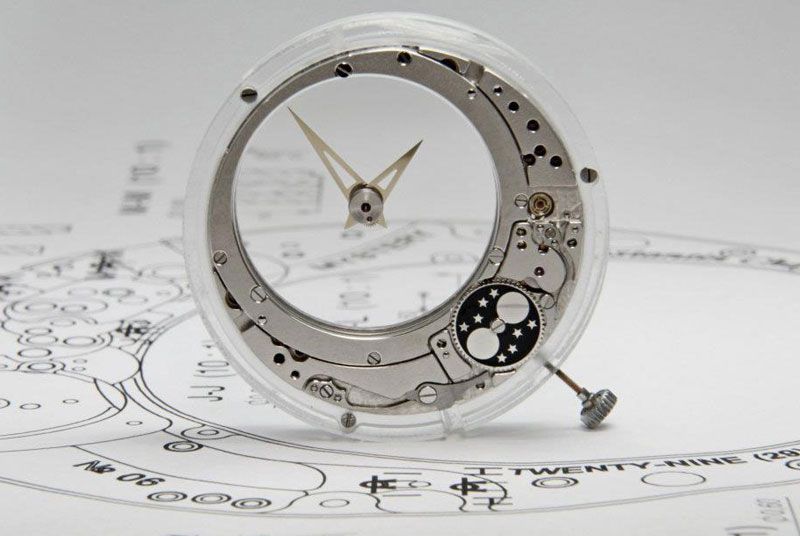
Going back to 2008 again, Montblanc introduced their Grand Tourbillon Heures Mysterieuses (“READ ALL ABOUT IT!”), a Compangnie Financiere Richemont SA homage to the 150th anniversary of the founding of Minerva featuring (among other things) a large tourbillon and a subordinated mystery dial at 6 o’clock. Here the dial is not transparent as much as you immediately notice that the hands are not mounted onto any type of stalk! The initial reaction when you look at it is to say: “how do they do that?” The MB-M 65.60, 26-jewel movement was developed by stable-mate Minerva for this application. The hands are placed on geared discs of sapphire and are driven in meaty part of the case, this time in the area of the top of the case from 9-12-3 that is NOT occupied by the fairly large tourbillon structure. It wasn’t until 3 years later and the introduction of the Tourbillon Bi-Cylindrique (“READ ALL ABOUT IT!”) that we got a glimpse of the inner workings of the Montblanc Mystery dial, gears and all.

But these are still not the first ‘so-called’ Mystery dial timepieces – neither watch nor clock! Thirteen years ago I saw a transparent watch from the Swiss firm Quinting. A ‘mysterious’ chronograph watch with a date-hand pointing to the outer chapter ring. I puzzled over the pictures for a bit, wondering how it was done. Admitting defeat I brought the photo to a watchmaker friend in town; he immediately pointed out the wide margins around the subsidiary registers and the rather wide chapter-ring around the dial, suggesting that there was a gearing mechanism that moved the discs with hands mounted to them or etched out of them, rather than hands themselves. He also pointed out that using a date indicator instead of traditional date wheels eliminated some of the potential clutter. AH HA!!! He then pointed out that the watch was a quartz movement – the discussion died there.

Indeed plenty of other makers from Louis Vuitton (see above) to Zodiac presented variations of the mystery dial over the years. So far as I can tell, all of the different designs and all of the different models trace themselves back to Jean-Eugene Robert-Houdin, magician, (namesake and inspiration to Harry Houdini), inventor and (imagine that!) a watchmaker! As far back as 1839 Robert-Houdin presented clocks with so-called Mystery dials (rather fitting for an illusionist, no?)
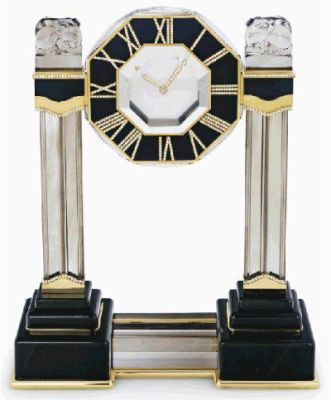 In the early part of the 20th century, Cartier presented Mystery dial clocks that were mechanically and aesthetically inspired by Robert-Houdin’s clocks. So to respond to the name-calling out there regarding who was first – the answer appears to be Robert-Houdin. He’s been dead about 143 years, so I doubt/hope he’s not going to weigh in on the matter. (If he does – I sure as heck don’t want to be around for that!)
In the early part of the 20th century, Cartier presented Mystery dial clocks that were mechanically and aesthetically inspired by Robert-Houdin’s clocks. So to respond to the name-calling out there regarding who was first – the answer appears to be Robert-Houdin. He’s been dead about 143 years, so I doubt/hope he’s not going to weigh in on the matter. (If he does – I sure as heck don’t want to be around for that!)
What we have here is not anything more than a blunder. Konstantin captured everyone’s imagination with his Levitas. Cartier (perhaps with some help with their co-workers at Minerva?) decided that they could use the theme to say something about their technical virtuosity.
Not David VS Goliath… more like David AND Goliath
Did anyone steal from anyone else? I strongly doubt it; and really it all boils back to Robert-Houdin. Konstantin Chaykin is a very serious person – not just a craftsman or a technician behind the bench – but a consummately professional person. He dedicates massive amounts of thought and creativity to his work and he takes pride in his finished product. Cartier vis-à-vis Richemont is a massive, well-run and highly professional organization; they have a long-running track record of innovative designs. (They are also a publicly traded company and don’t in any way want to invite the kind of hurt an intellectual property law-suit would bring into their lives. If their PR people won’t tell you that their lawyers WILL!) We could make technical arguments as to how similar/ different the movements are in layout and function. (Interestingly – none of the watchmakers asked to contribute to this article wanted to get with a country mile! Could be the subject mater or it could just be me…) At the exact same time I can make the argument that if you were given a round case and blocked out a significant portion of it, so that all you had to work with was a crescent shaped sliver, you’d have a tough time coming up with anything that was fundamentally different from what any of the other makers here have.
Ultimately it is down to the consumer; even if there are huge similarities in the finished pieces – both makers/watches represent totally different things. Which finished product speaks to you the most clearly? Is it the history and cache associated with Cartier? Is it the exclusivity and intimacy of Chaykin? YOU decide.
PS. Cartier’s new Rotonde de Cartier Mystery Watch in rose gold (stainless steel is not offered) starts at a retail price of close to € 43.500 Euro. The Levitas collection from Konstantin Chaykin start from € 20.950 Euros (before tax) in steel to € 26,500 Euros in rose gold (also before tax).
___________________________
Two photos of the Cartier Rotonde de Cartier Mystery Watch are kindly borrowed from Geo Cramer, guest contributor at Monochrome and founder of Troisanneaux.com, the online database about all Cartier timepieces. This article is written by Mario Squillacioti, contributing writer for Monochrome-Watches.




5 responses
Thanks for writing about this very interesting part of watchmaking!
I would like to add an important watch to this article, if I may;
The Cartier Santos Mysterieuse from 2006. This watch has been, in my opinion, a huge inspiration.
How much does it cost?
Hi..I like your watches..but how much it will cos
Omega had their “La Magique” long before these watches. Ok, it was a quartz watch but was not only transparent but also incredibly thin (even for a quartz watch). It would be nice to read about La Magique on your blog…
You’re entirely right here. This watch was the one to build the concept. However, here on Monochrome, we mainly cover mechanical timepieces and this is why this Omega is not part of the article.